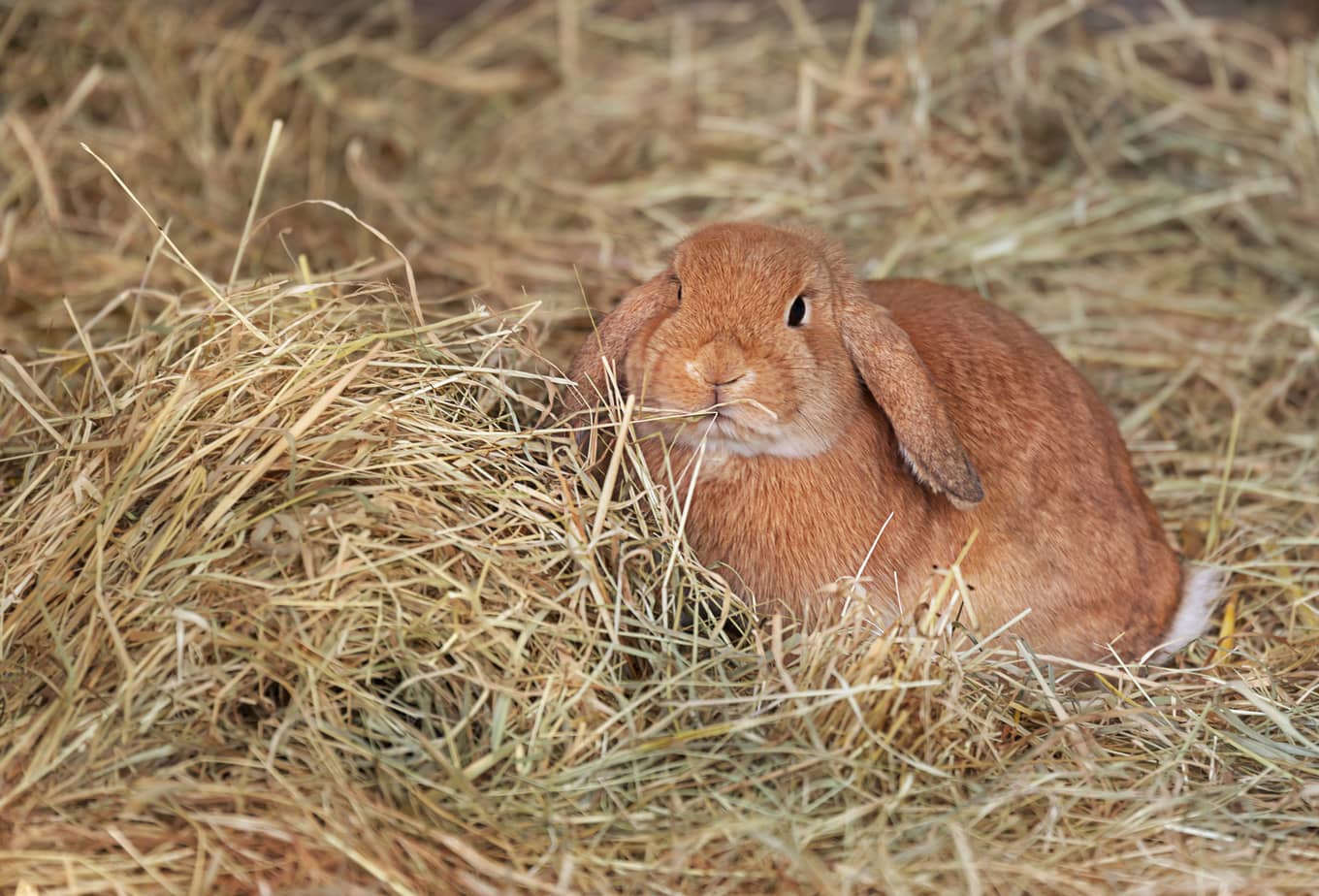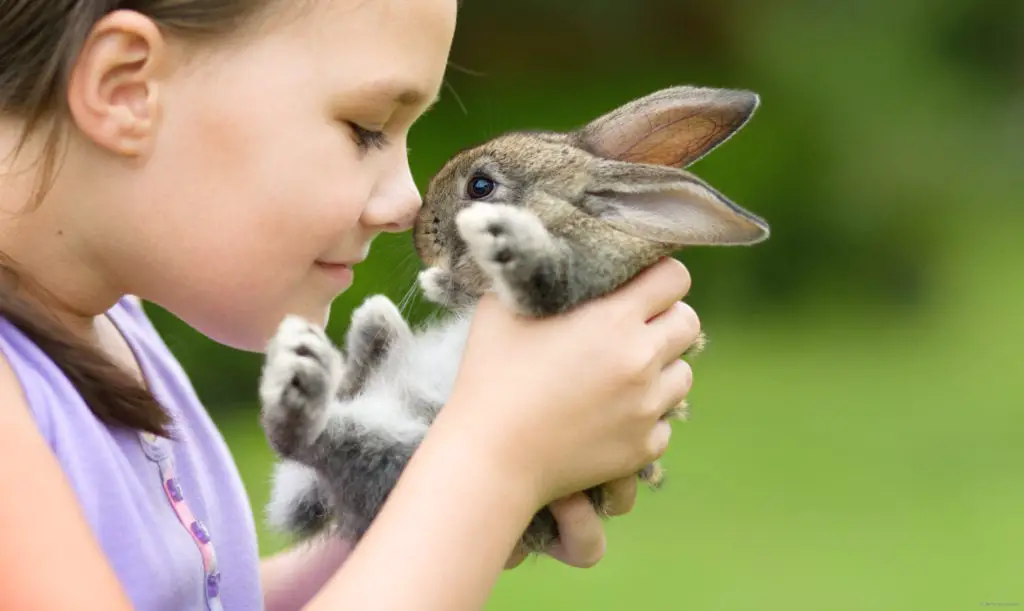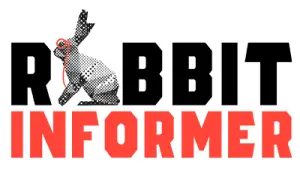
Rabbits run like crazy, so naturally, some people want to chase and play with them. The real question is whether rabbits actually like being chased or not.
Rabbits will run, jump, and play with those they are familiar with, but running is also the first measure they take to escape prey. Look for several body language signs (ears held back, hind legs thumping the ground) to determine if they are in distress.
There are many more examples of good and bad body language when it comes to playing with your rabbit. We will talk about these different forms of body language and what they mean.
Angry Body Language
These really are the signs you want to look out for. If your rabbit shows any of these it means they want to retaliate. According to one Reddit user, she can tell that her rabbit is angry by asking,
“Are her ears back in a defensive manner? Is she thumping or grunting?” If these are both answered with yes, she finds that her rabbit is often angry.
Source
Another sign that a rabbit is in an angry mood is if they seem to be preparing themselves for a fight. This is usually shown by them standing up on their hind legs. In this position, they look like a boxer who is ready to throw some punches if needed.
Another way that they prepare themselves for a fight is if they are standing tense with their body down while they show you their teeth. This means that they are ready to pounce on and bite you if you continue acting the way you are.
Also, if your rabbit growls, it’s another sign that your rabbit is not happy. Growling from your rabbit though can mean a few different things depending on the circumstances. See my article all about rabbit growling and what it means to find out.
It is never a good sign if your rabbit is showing any of these body language signs. If they exhibit them during or after you are chasing them, then it is a good sign that they want to be left alone.
Anxious Body Language
Another poor form of body language you want to look out for is when they show that they are anxious.
There are two telltale signs of an anxious rabbit and they are very easy to detect. First of all, when you have a very anxious rabbit, you may not see it very often, being that rabbits that are overly worried or anxious may stay hidden.
On the rare occasion, you do see your anxious rabbit, they will be tense with their head held to the ground and their ears flat on their back.
If it is not obvious already, the biggest presentation of a rabbit’s mood is through its ears and tail. When they show these flat ears it really tells everyone that they are scared and that they do not want to be there.

This is another emotion you want to look out for with your rabbit. If you are trying to play with or chase them and they show anxious body language it would be a good time to take a second to be relaxed. After some form of relaxation, your favorite rabbit might be ready to have you start chasing after them again.
Calm and Happy Body Language
The fun begins when your rabbit shows that they feel happy and comfortable. The signs that your rabbit is ok with being chased are fairly obvious and explainable.
If your rabbit is in a playful mood it will avoid any of the defensive or anxious positions that we have already talked about. A usual good sign that your rabbit is comfortable is when they are laying down with their legs tucked underneath their body. Another good sign is when they click or buzz their teeth.

While these are signs that your rabbit is comfortable in a quiet moment, many signs show they are comfortable while they are being energetic.
The first obvious sign is if they run around when you are not chasing them. Obviously just like humans, if they are doing it when they are not forced into it, that probably means they love it. When they do this it shows that they are enjoying the exercise and you should probably do it more often.
DID YOU KNOW? A rabbit laying on its side generally means it’s happy and healthy. But to learn more about this behavior, also called “flopping”, see my article This Is Why Your Rabbit Lays on Its Side.
Another good sign is if they lick you or not. A rabbit that licks you feels comfortable and safe with you.
The last solid sign you want to look for is whether their ears and tail are relaxed. As said before, the ears and tail are the biggest telltale signs of their mood. When they feel any form of anxiousness or anger the first thing to change is their tail and ears.
It is always a good thing when your rabbit shows that it is comfortable and relaxed, this is especially the case when you want to chase the little guy around the house.
MORE WAYS RABBITS COMMUNICATE
Rabbits communicate in many ways, many of which are easily overlooked by their owners if they don’t know what to watch for. See Rabbit Language: 27 Ways Bunnies Communicate for some specific examples of what to watch for and what these things mean!
How to Help Your Rabbit Become Comfortable
So if you are reading this far in, obviously you want to spend your Saturday nights chasing around your rabbit. With this being said, questions remain as to what to do if your rabbit is not comfortable with you chasing them. There are different ways that you can get your rabbit to be more comfortable over a period of time. These primarily include the following:
- Find out what is upsetting your rabbit
- Pet your rabbit
- Bring your rabbit to a safe environment that it knows
- Give your rabbit a toy to play with
- Speak gently around your rabbit
- Spend more time with your Rabbit
- Offer your rabbit treats
- Establish regular routines of petting and playing
- Try covering their eyes and ears to help them become calm
These nine tips all have the same goal of making your rabbit more comfortable with you. When your rabbit becomes comfortable with you, it will lead to more opportunities for fun things like chasing.
To finish off, rabbits may be fun to play around with, and even to chase, but make sure they are comfortable with doing these things with you. There are ways you can figure out your rabbit’s mood and there are ways you can help your rabbit begin to feel comfortable. Be aware of your rabbit’s body language and use common sense when deciding what is appropriate for your pet.
